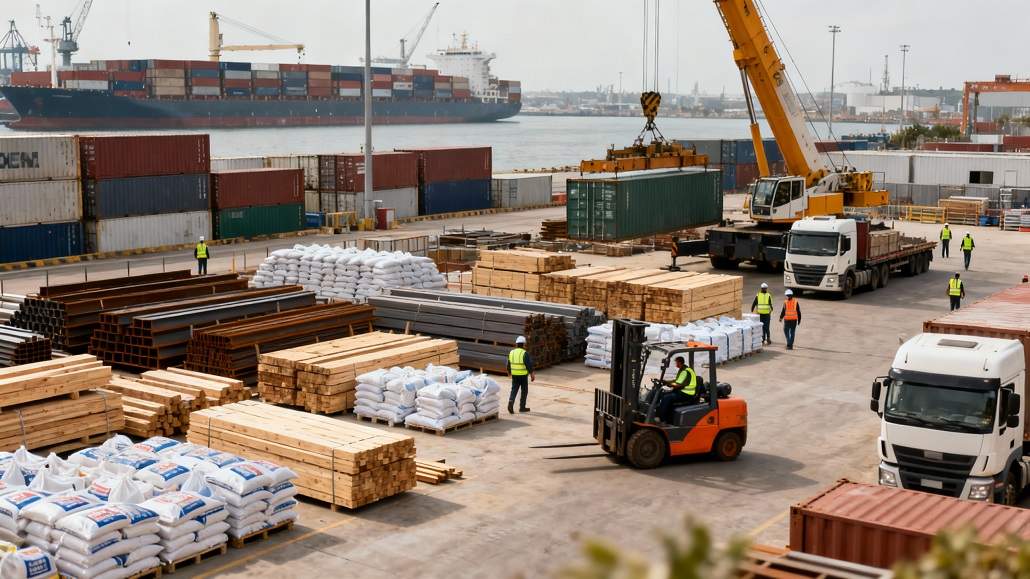Maximizing Efficiency in Construction with Remote Team Collaboration Tools
In the construction industry, efficiency is critical to ensuring projects are completed on time and within budget. Traditionally, construction work has been seen as labor-intensive, requiring an on-site presence for effective management. However, with the rise of digital tools and the necessity of remote work due to global circumstances, the construction industry has found innovative […] The post Maximizing Efficiency in Construction with Remote Team Collaboration Tools appeared first on World Construction Today.

In the construction industry, efficiency is critical to ensuring projects are completed on time and within budget. Traditionally, construction work has been seen as labor-intensive, requiring an on-site presence for effective management. However, with the rise of digital tools and the necessity of remote work due to global circumstances, the construction industry has found innovative ways to enhance team collaboration. The integration of remote team collaboration tools is now more crucial than ever.
These tools transform how construction projects are managed and completed, offering flexibility and productivity. By embracing remote worker tracking software, construction companies can monitor progress, streamline communication, and maximize efficiency in ways that were impossible before.
The Shift to Digital Collaboration in Construction
Traditionally linked with manual work and physical presence, the construction industry has been one of the least digitally transformed industries. However, as industries worldwide shifted towards work-from-home models, construction had to adapt to such changes as well. Task-scheduling applications, online collaboration platforms, and programs for sharing data in real-time have helped teams work effectively despite their geographical locations.
It is not just a change in how construction projects operate in the short term but also a long-term change in their management. As remote team collaboration tools have emerged, new opportunities for flexibility have opened, and different stakeholders, such as architects, engineers, project managers, and on-site staff, are integrated into the process. These tools are independent of physical presence but allow the team members to remain informed and coordinate the progress and resolution of various challenges in real time.
Of course, the first benefit is the need to communicate between the employees who work remotely and those who work in the office. In real-time messaging and video conferencing, decisions can be made simultaneously and without waiting for a face-to-face meeting. This saves time in projects, eradicates delays, and keeps everybody in that project informed on the latest developments and changes. It has become easier for construction professionals to handle several projects simultaneously, which was tricky without collaborative technology.
Improving Project Management Through Real-Time Data Sharing
One of the most valuable advantages of using remote team collaboration tools in construction is data sharing and real-time access. Construction is a fluid process, and activities are often initiated based on some event happening on the construction site, such as a change in weather, change in design, or change in resources. In the past, the failure of field workers to relay information to management and vice versa led to downtimes and longer project duration.
However, using digital technology such as construction-specific project management software, team members can notify each other in real-time regarding status changes, documents, and progress. This kind of data transmission enables faster decision-making processes, especially when emergent concerns arise. For instance, an on-site worker may develop issues with the materials or machinery. In such a case, instead of addressing it, they report it to the project manager, who can work on it from the comfort of their home or any other location.
Furthermore, management can track the productivity and the flow of work done by the remotely located employees and those who work in the company’s office. It checks whether everyone is still on schedule for the project and also assists in checking where improvements can be made. Through monitoring the activity of the workers and the progress of the project, construction firms can make wise decisions that will help increase the efficiency of the workers and, at the same time, minimize time wastage.
Improving Relational Integrity and Decreasing Expenses
The other advantage of the remote team collaboration tools is that they are relatively cheaper to implement. There is always a tendency in construction projects to have delays, low productivity, and misunderstandings of the project’s progress, which leads to cost overruns. Nevertheless, new digital collaboration tools help to optimize the resource, time, and cost of the labor factor more efficiently. Using remote collaboration platforms in project management increases the chances of getting it right the first time and from the proper perspective, leading to better planning and forecasting.
For instance, systems integrated in the cloud allow managers to effectively oversee the use of resources such as materials, equipment, and manpower. This helps avoid the costs of having too many supplies or people to attend to some responsibilities. Also, remote collaboration between teams can help to cut expenses since project managers can be off the construction site to oversee the work.
Remote collaboration is the future of construction.
As the construction industry moves more into the digital age, remote collaboration will be a critical factor in projects’ success. The COVID-19 pandemic has ramped up this change, but the applications of remote team collaboration tools go beyond the current mandate of working from home.
As technology continues to grow, these tools will become more complex, providing construction managers with the ability to anticipate problems and prevent them from arising in the first place through artificial intelligence and machine learning. Moreover, new virtual and augmented reality tools will enable more extended and effective collaboration, letting remote participants ‘’feel’’ that they are on construction sites without being physically present.
Conclusion
Optimization of efficiency in construction is a difficult task. However, the use of remote collaboration software can remove the task barriers. These tools have several advantages, such as better communication, real-time data sharing, reduced costs, and safety. That is why using technology solutions like tracking software for remote workers would help construction companies maintain projects’ progress and remain relevant in the modern world. Therefore, adopting these tools will be critical to construction firms that wish to optimize their performance and survive in the future within the advancing industry.
The post Maximizing Efficiency in Construction with Remote Team Collaboration Tools appeared first on World Construction Today.

 machineryasia
machineryasia 









